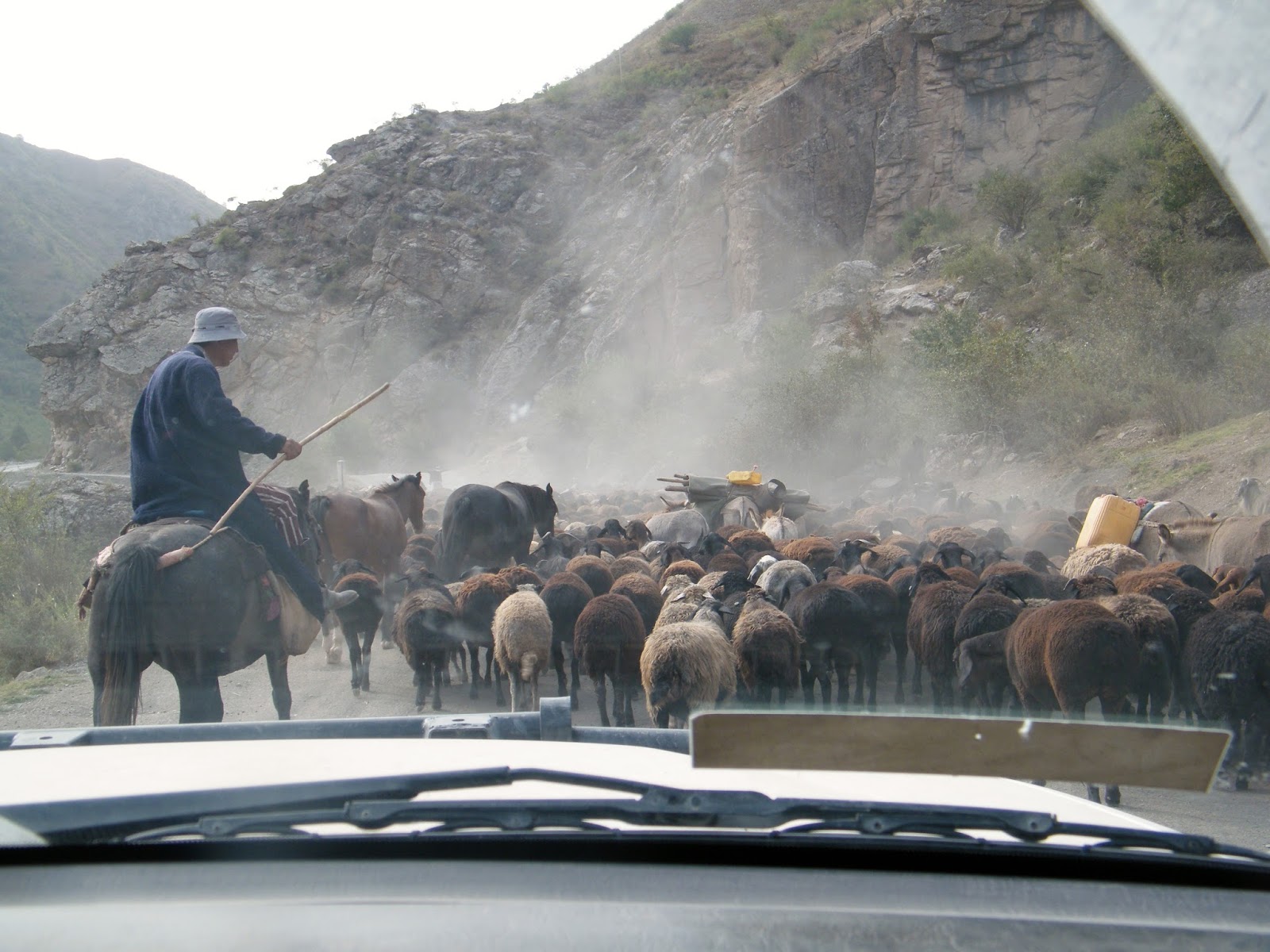 |
| The remains of ancient Penjikent |
Friday 23 August 2013
A walk around Penjikent
The name Panjakent is derived from "panj" (five) and "kant" (settlements), meaning "five settlements". Rudaki, the founder of Persian-Tajik literature called "Adam of poets", was born in Panjakent. Around the modern town and in its museum you will find remains of the pre-Islamic, Zoroastrian civilization. The remains of this then important Sogdian trading city on the silk road are just out of town, on a hill overlooking the valley. You can wander around the site unbothered, it is totally unprotected from anything including joyriding cars and broken bottles such a shame!
Wednesday 14 August 2013
Roof of the world
The end of Ramadan means two things, happy fed and watered Muslims and a holiday. Time for another adventure and a visit to the 'roof of the world' the high Pamirs. Once again I joined my new friends at Welt hunger hilfe the German based organisation working on agro projects in Tajikistan. We set off on what was to be a very long journey. This mountainous area, a large part of which is located in Gorno-Badakhshan in Tajikistan, is one of the most inaccessible in the world. The word pamir in the language of the region denotes the high undulating grasslands of the eastern portion of the mountains, especially where they abut Afghanistan and China. Deep river valleys mark the boundaries of the Pamirs in the north beyond the ridges of the Trans-Alai Range, and the valleys of the Vākhān region (Wakhan Corridor) of Afghanistan form the southern limit. We were heading for an area near the Fedchenko glacier, this glacier is the largest outside the polar regions at nearly 80 km long, on route the terrain was tough, here we see some of the typical terrain we had to cross.
Joachim has more gadgets than Nasa and is a master with a Toyota land cruiser, I don't think I have ever felt safer in a car!
The tracks slowly got worse and finally and very reluctantly Joachim threw in the towel so to speak. Luckily for us our track halted near a homestay about 18km from the destination we were aiming for, the owner of the homestay just happened to own a 50 year old Russian military vehicle called a 'Gas 66' easy to remember as it was a good year for English football which I took great pleasure in reminding my colleagues ha ha.
 |
| Joachim our master driver and gentleman Bavarian |
Joachim has more gadgets than Nasa and is a master with a Toyota land cruiser, I don't think I have ever felt safer in a car!
The tracks slowly got worse and finally and very reluctantly Joachim threw in the towel so to speak. Luckily for us our track halted near a homestay about 18km from the destination we were aiming for, the owner of the homestay just happened to own a 50 year old Russian military vehicle called a 'Gas 66' easy to remember as it was a good year for English football which I took great pleasure in reminding my colleagues ha ha.
Subscribe to:
Posts (Atom)























